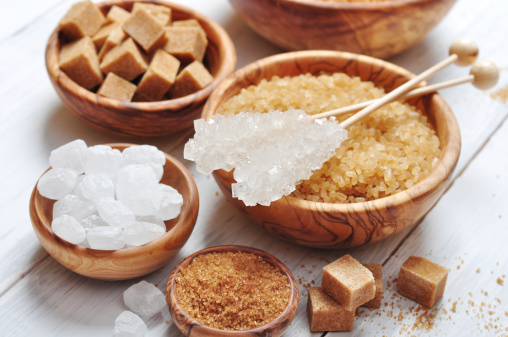On Friday, the Food and Drug Adminstration proposed that nutrition fact labels include a daily value for added sugars — that they not exceed 10 percent of the calories we eat. So, are you eating too much?
While you might envision sugar only as white crystals sitting in a bowl, it's actually an original, unprocessed carbohydrate found in nature in multiple forms: sucrose (sugar beets and sugar cane), fructose (fruits and honey), and lactose (milk and yogurt).
Over the past few decades, the term "added sugars" has crept into the food lingo, which has forever changed how we need to think about sugars for healthy eating.
And this term means exactly how it sounds: adding extra sugar to packaged and processed foods ranging from treats, to everyday choices that often have healthy sounding names. And there can be a surprising amount of sugar in foods that don't even taste particularly sweet.
10 percent of daily calories
"Cut back on added sugars" is a familiar health recommendation but until now, there has been no frame of reference on whether you're eating too much, and how to cut back. The new FDA proposal, based on a review of the current scientific data (similar to that used for the 2015 Dietary Guidelines for Americans Advisory Group) provides a guideline for daily added sugar intake: 10 percent of daily calories consumed.
For a person consuming 2000 calories, this is about 200 calories per day (or 50 grams and about 12 teaspoons a day).
Here's how to translate from calories to grams to teaspoons. Use the "divide by 4" rule of simple sugar math. Take the calories and divide by 4 to get the grams of added sugar. For 200 calories, this is 50 grams. And for teaspoons? Divide by 4 again to get around 12 teaspoons of added sugars daily. Depending on your daily calorie intake, a recommended added sugar intake can range from 6 teaspoons to 15 teaspoons a day, for most people.
Damon Gameau, an Australian actor and filmmaker, has made a documentary to raise awareness of all of the hidden added sugars in everyday foods, and how to figure out where this sugar is. One main message:
READ THE NUTRITION LABEL.
That's the only way to know for sure, not a taste test. And Gameau emphasizes the concept of converting grams on the label, to teaspoons using the "divide by 4" rule. Gameau chronicled his own 2-month personal exploration with added sugars in his documentary film "That Sugar Film" and companion book ("That Sugar Book") when he changed his healthy Mediterranean-style diet to everyday foods containing lots of added sugars. He ate foods containing 40 teaspoons of added sugars daily (160 grams, around 640 calories — about 25 percent of calories).
When it comes to added sugars in the diet, here's the bottom line:
1. The goal is to limit, not eliminate added sugars.
2. New FDA guidelines suggest 10 percent of daily calories from added sugars
For 2000 calories per day, 50 grams of added sugars, about 12 teaspoons.
3. Use the "rule of 4" to calculate added sugar intake for your own daily calories
Start with your calories, and use the first 3 numbers for the 10 percent added sugar goal (1,500 daily calories is 150; 2,400 daily calories is 240). Divide your number by 4 to get daily sugar grams; divide grams by 4 to get your daily teaspoons.
4. Read the nutrition label for added sugars, and don't rely on your taste buds.


